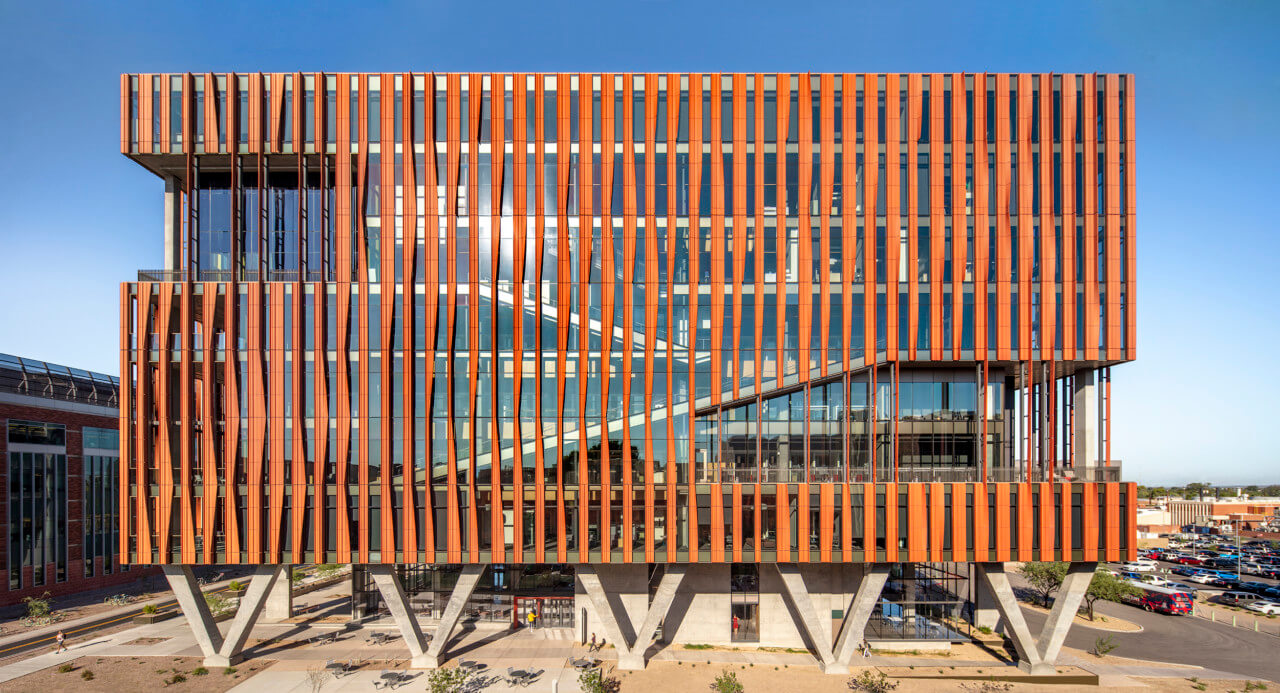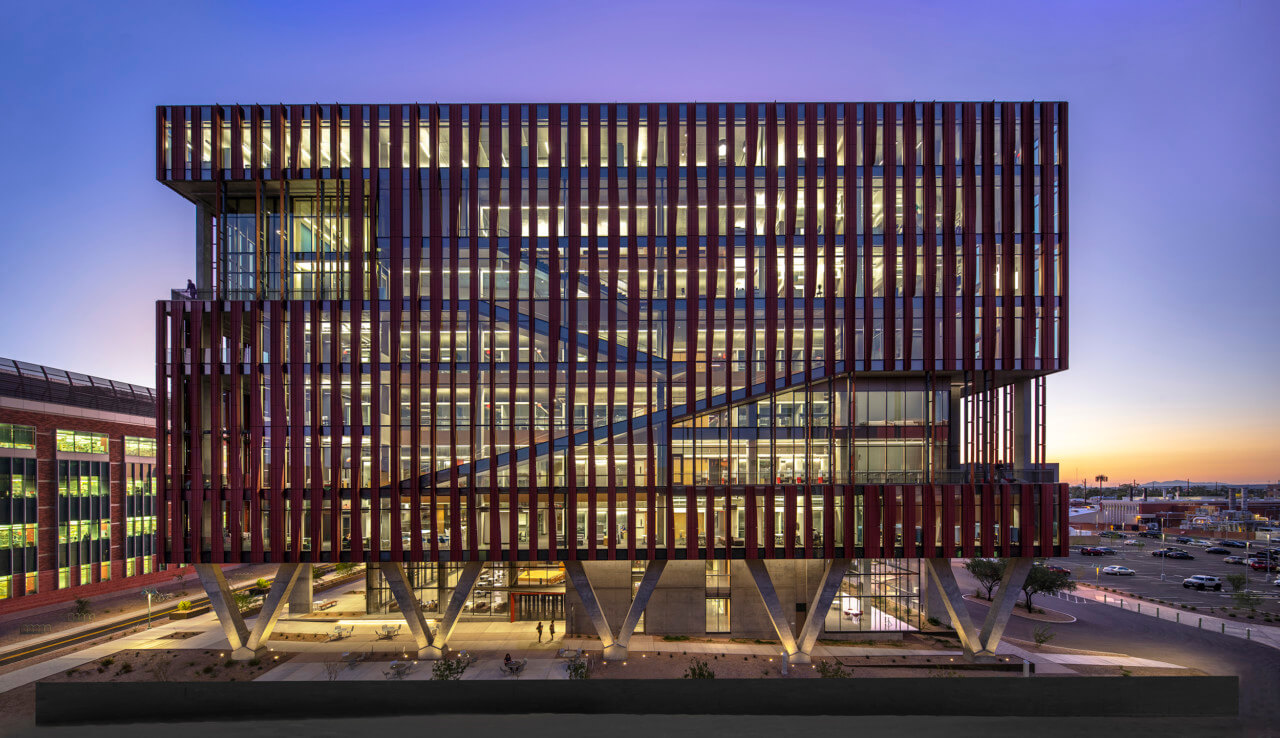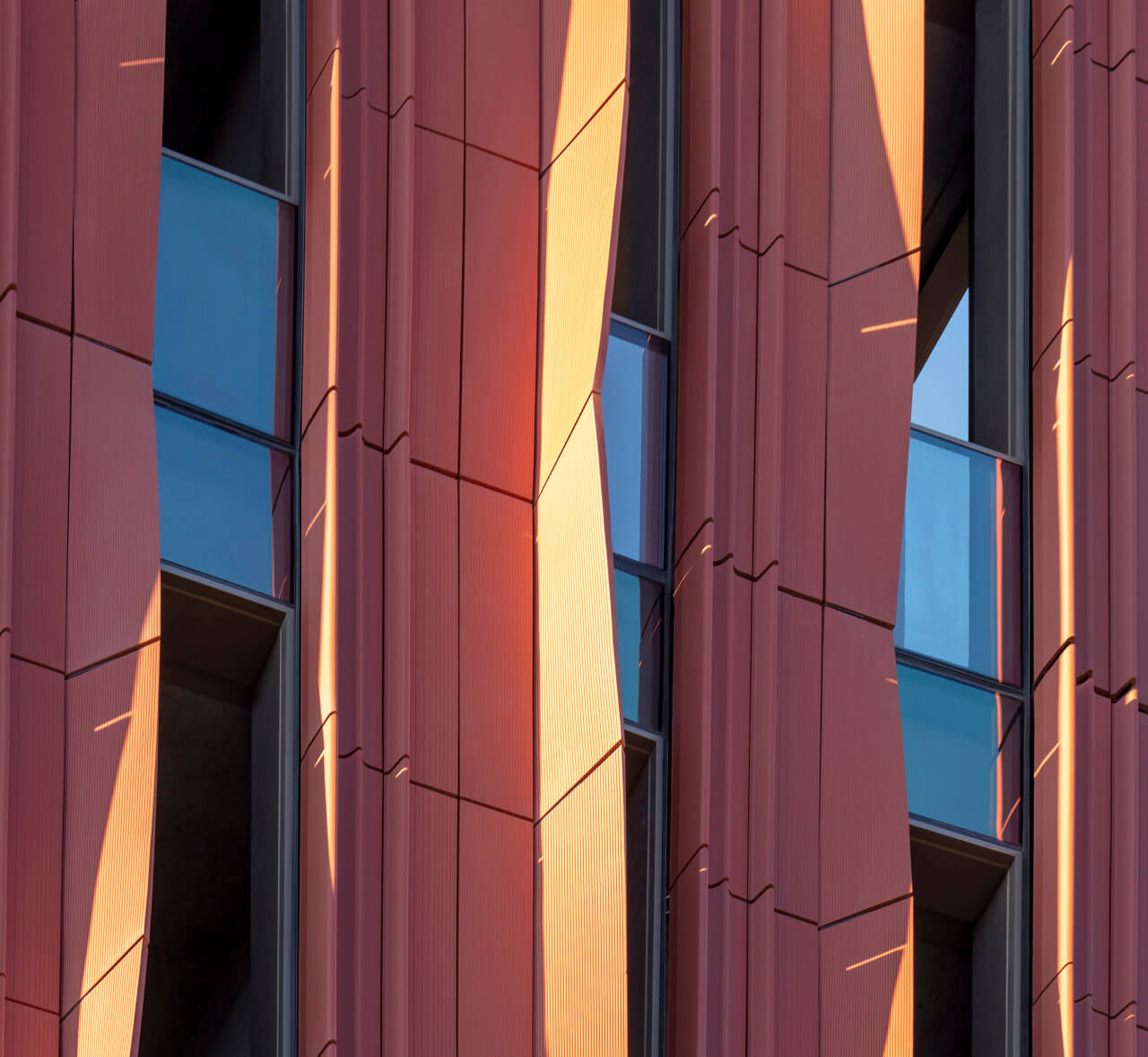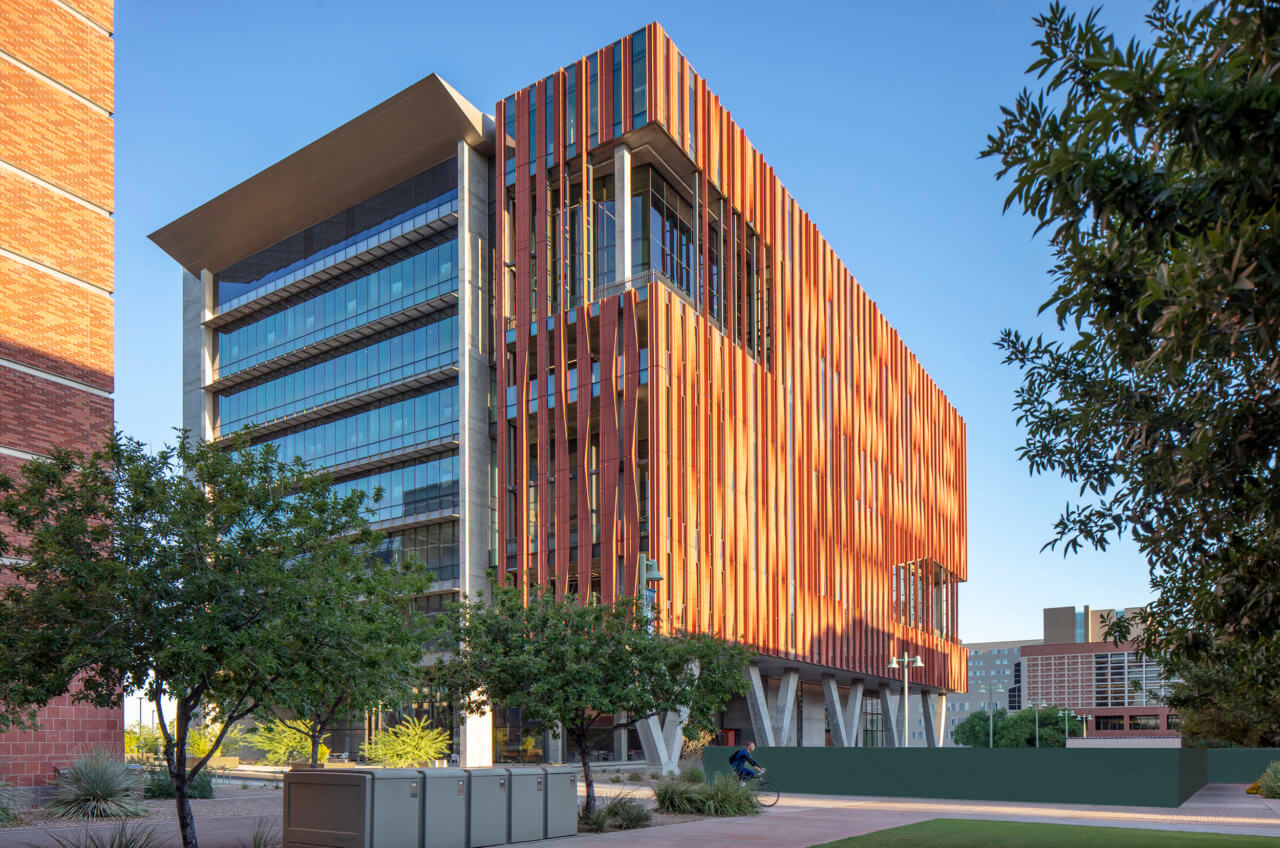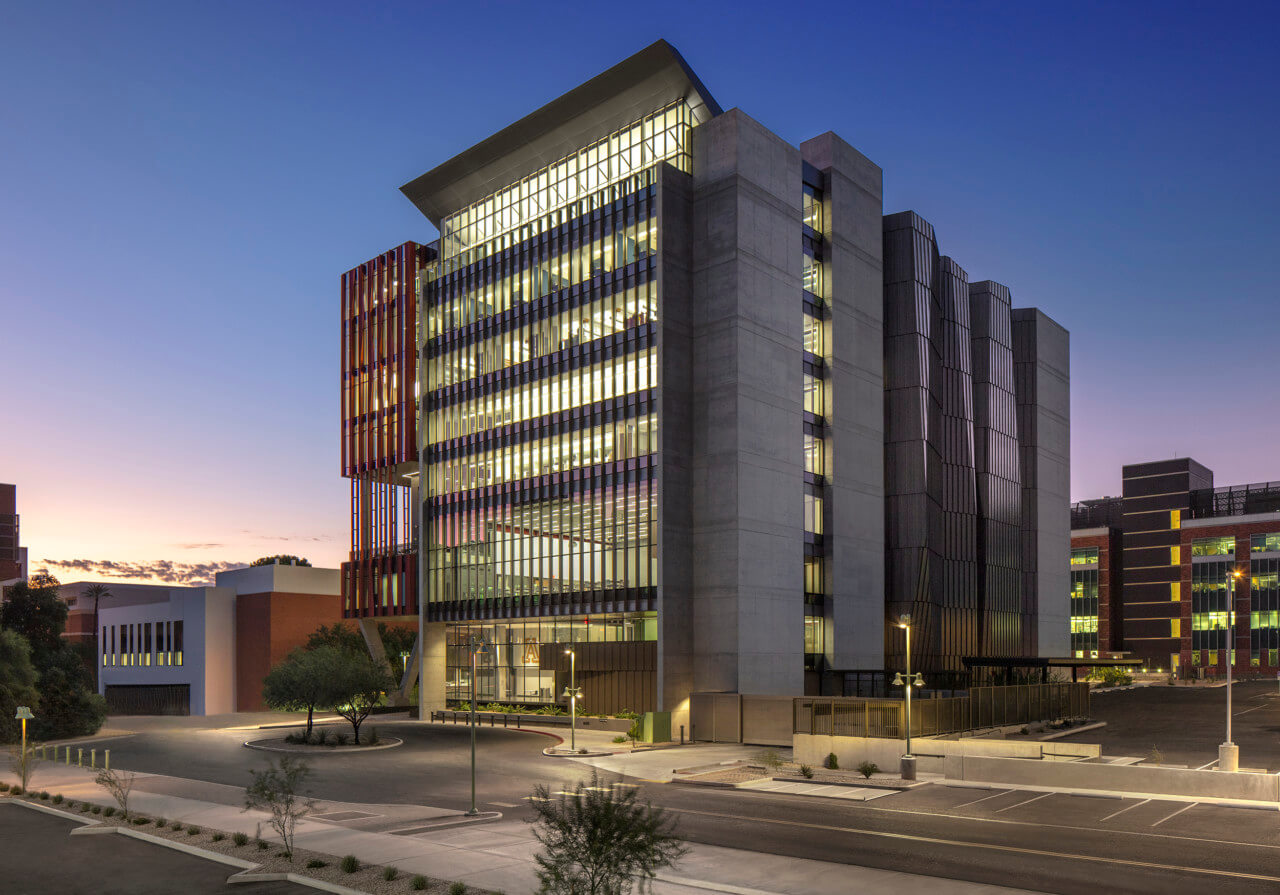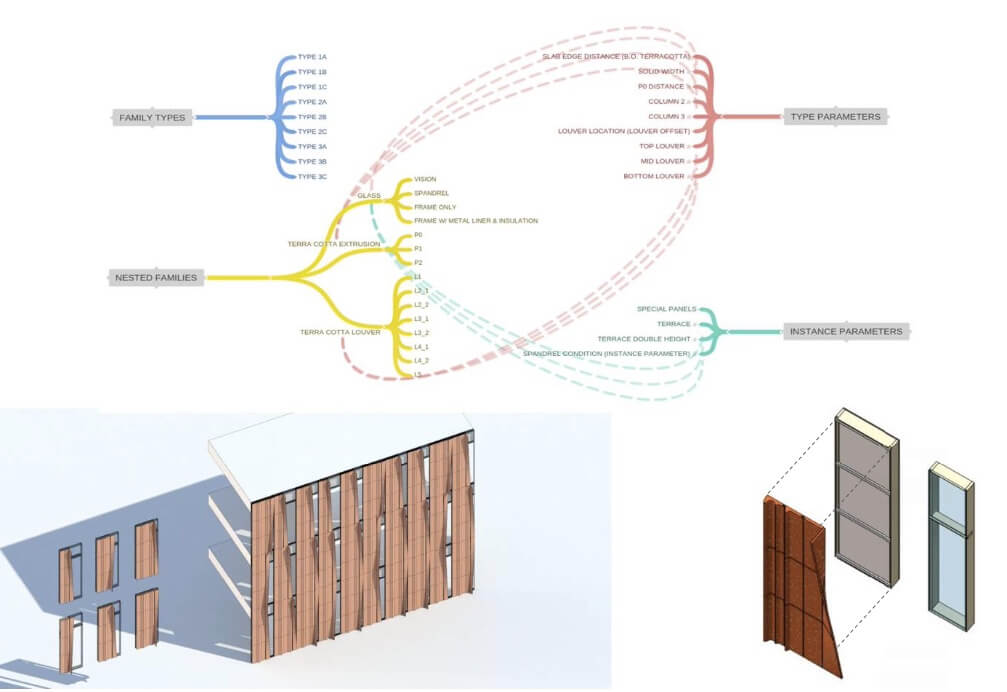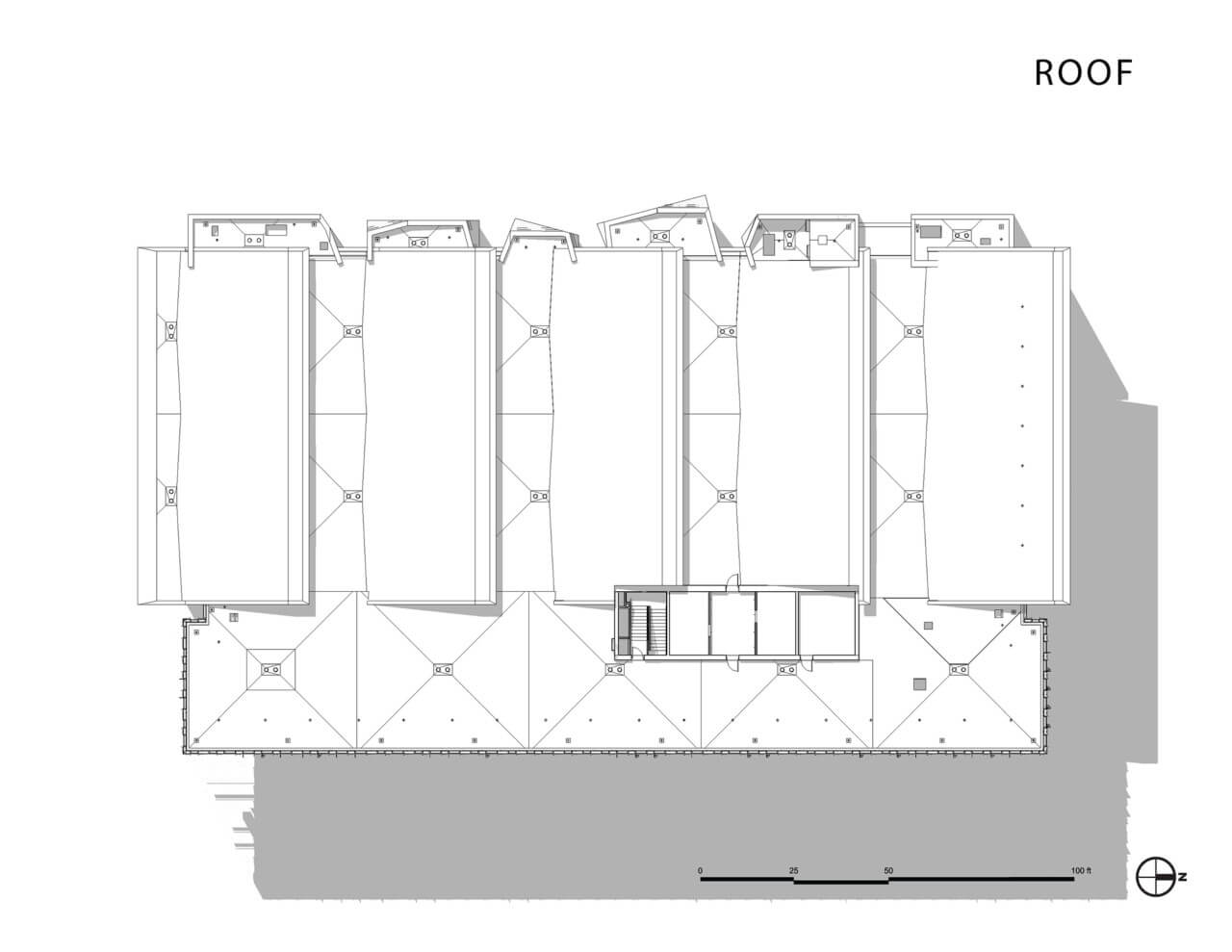The University of Arizona (ASU), which has constructed several new buildings and overseen extensive renovations to its existing structures recently, added the Health Sciences Innovation Building to that list in May of 2020. Designed by CO Architects, the 9-story building offers 230,000 square feet of space to support an extensive network of professional and academic services for five of the school’s colleges. The concrete, glass, and steel structure features a folding terra-cotta paneled wall in addition to three other distinctive exteriors; no two alike, but all evocative of movement.
At the main entrance, the eastern facade of twisting terra-cotta panels nods to Arizona’s vernacular red brick and traditional Southwestern building materials such as adobe. It begins at the second story above monolithic concrete supports, hugging the rest of the building with a slight over-wrap. The 3,110 panels, all 12”-by-60” in size, are extruded and twisted to 10 different typologies based on the orientation of the sun and window condition. These panels were attached to the unitized curtain wall system made by Kovach to create a prefabricated rainscreen assembly. To achieve the custom color, Boston Valley Terra Cotta created a unique mix of clays, minerals, and stains with each panel pushed through several different dies. A special manufacturing technique was developed by Boston Valley to create the “saguaro cactus-inspired” louvers in a dark-red adobe color. After being extruded, the louvered pieces were twisted while still pliable and finished with a rake texture.
The north and south facades feature glazed curtain walls with sunshades to reduce heat gain and concrete massing angled to maximize efficiency. With 903 pieces of glazing, these curtain wall units reach a typical height of 15 feet.
“HSIB is a true testament to an integrated team working under difficult and fast-paced conditions to create a truly high-performing, one-of-a-kind, and place-specific facade in support of the next generation of health-science professionals,” said Alex Korter, principal at CO Architects and Building Facades Group Leader. The $128 million dollar project achieved LEED Gold certification and is the firm’s third building designed for ASU.
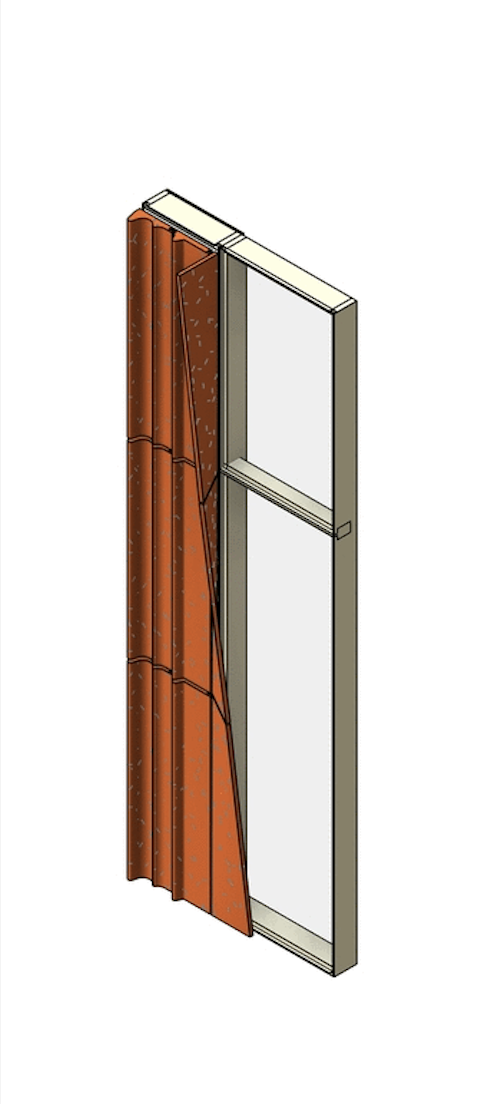
The Los Angeles-based firm’s greatest challenge was the timeline: the design, documentation, and construction all had to be completed in 36 months. Due to the fast-track nature, there was little room for error in the parametric modeling, geometry, and panelization of the terra-cotta feature wall. The four facade assemblies took one year to install.
